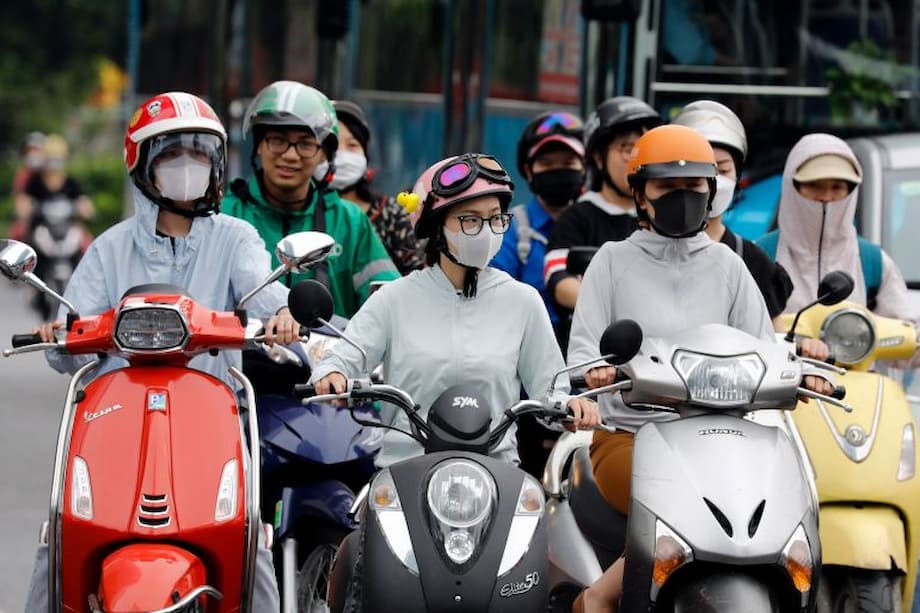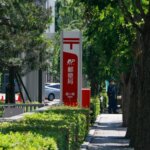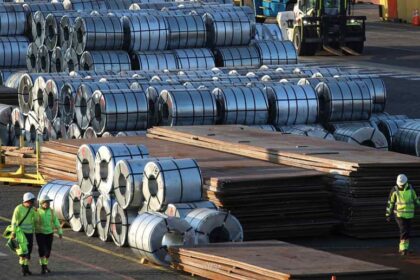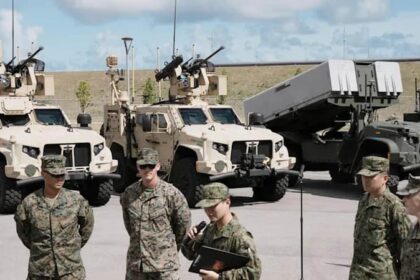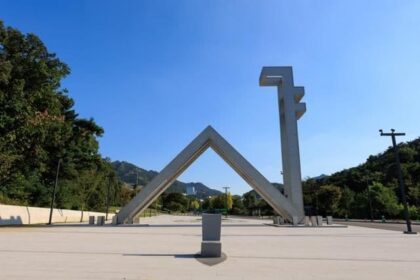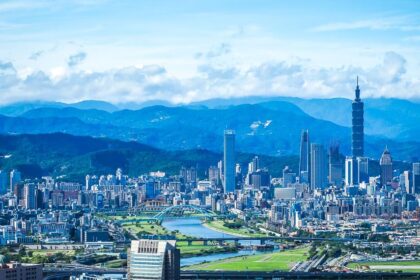Hanoi’s Bold Ban on Petrol Scooters: A City at a Crossroads
Hanoi, Vietnam’s bustling capital, is on the verge of a seismic shift. Starting July 1, 2026, petrol-powered motorbikes—the lifeblood of the city’s streets—will be banned from the city center within Ring Road 1. This unprecedented move, mandated by Prime Minister Pham Minh Chinh’s Directive 20, aims to tackle Hanoi’s notorious air pollution and set the city on a path toward greener, quieter, and more sustainable urban life. But as the deadline approaches, the city’s 8 million residents are divided, and questions loom over the feasibility, fairness, and broader impact of the ban.
- Hanoi’s Bold Ban on Petrol Scooters: A City at a Crossroads
- Why Ban Petrol Scooters? The Air Pollution Crisis
- How Will the Ban Work? Timeline and Scope
- Public Sentiment: Support, Skepticism, and Social Tensions
- Economic Impact: Winners, Losers, and Industry Shake-Up
- Infrastructure and Feasibility: Is Hanoi Ready?
- Lessons from Abroad: Global Context and Comparisons
- Impact on Tourism and Daily Life
- What’s Next? The Road to 2026 and Beyond
- In Summary
Why Ban Petrol Scooters? The Air Pollution Crisis
Hanoi’s love affair with motorbikes is legendary. With nearly 7 million two-wheelers—almost one for every resident—these vehicles are essential for commuting, deliveries, and daily life. Yet, this convenience comes at a steep cost. Hanoi consistently ranks among the world’s most polluted cities, with air quality index (AQI) readings frequently in the “unhealthy” range. Exhaust fumes from petrol scooters, combined with emissions from cars and construction dust, create a toxic haze that blankets the city, especially during the dry season.
According to the World Health Organization, more than 60,000 deaths in Vietnam each year are linked to air pollution. Fine particulate matter (PM2.5) and nitrogen dioxide from vehicle exhaust are major contributors, increasing the risk of asthma, heart disease, and premature death. As incomes rise and more residents purchase personal vehicles, the pressure on air quality has only intensified.
City officials hope that electrifying motorcycles—a mainstay of Vietnamese transportation—will not only reduce smog but also cut noise pollution and congestion in Hanoi’s dense neighborhoods. The ban is part of a broader national goal to phase out gas-powered two-wheelers by 2045 and achieve net-zero greenhouse gas emissions by 2050.
How Will the Ban Work? Timeline and Scope
The ban’s first phase targets the area within Ring Road 1, which includes Hanoi’s historic Old Quarter, business districts, and many government offices. From July 2026, petrol and diesel motorcycles and mopeds will be prohibited in this zone. The policy will expand to Ring Road 2 in 2028 and Ring Road 3 by 2030, eventually including gasoline-powered cars. By 2045, Vietnam aims to phase out all fossil-fuel vehicles nationwide.
Other major cities, including Ho Chi Minh City and Da Nang, are closely watching Hanoi’s progress and are considering similar restrictions. The Ministry of Transport has set ambitious targets: by 2030, 30% of cars and 22% of motorbikes in Vietnam should be electric.
What About Enforcement?
Enforcing the ban in a city of nearly 10 million people is a daunting challenge. Authorities plan to use increased registration and parking fees for fossil-fuel vehicles, digital monitoring systems, and stricter environmental penalties. Rewards will be offered to whistleblowers who report pollution breaches. However, many residents question how the city will block millions of drivers from entering restricted zones and whether law enforcement can keep up with the scale of the task.
Public Sentiment: Support, Skepticism, and Social Tensions
The ban has sparked intense debate among Hanoi’s residents. While many support the goal of cleaner air, others worry about the policy’s speed, fairness, and impact on daily life. A recent survey by VnExpress found that 58% of respondents believe the ban is unfeasible, while only 18% think it’s possible. Social media is awash with memes joking about alternative ways to get around—propellers, wings, or magic carpets—underscoring the anxiety and skepticism many feel.
For low-income residents, the ban is especially alarming. Motorbikes are not just a means of transport but a vital tool for earning a living. Delivery drivers, ride-hailing workers, and market vendors rely on their scooters to support their families. Nguyen Van Hung, a motorcycle taxi driver, voiced a common concern:
“It will affect people who rely on motorbikes to earn a living. How can people just discard their vehicles?”
Others, like Le Hong Viet, a store employee, see the motorbike as an integral part of family life and tradition. He recounted how his trusted petrol scooter carried his wife to the hospital to give birth and ferried his children to school for years. The prospect of replacing it with an expensive electric model feels both financially and emotionally daunting.
Experts and activists echo these concerns. Pham Thi Huong Giang, an environmental activist, warned:
“We need a transparent legal framework, a clear roadmap, and strong support for citizens in the transition, especially low-income groups dependent on motorbikes, as well as adequate public transport alternatives.”
While the government has promised financial support—up to 5 million dong (about $200) per person for switching to electric bikes—this covers only a fraction of the cost of a new electric scooter, which can run 30 million dong ($1,200) or more. Second-hand petrol bikes remain much cheaper, and many fear the ban will deepen inequality and spark social unrest if not managed carefully.
Economic Impact: Winners, Losers, and Industry Shake-Up
The ban is set to transform Vietnam’s auto and motorcycle markets. In the short term, traditional petrol vehicle manufacturers like Honda and Yamaha face tough choices: adapt their production lines to electric models or risk losing market share. Distributors are expected to aggressively promote petrol vehicle sales to clear inventory before the ban takes effect, while electric vehicle (EV) dealerships—especially those of local giant VinFast—are expanding rapidly in Hanoi and Ho Chi Minh City.
VinFast, a subsidiary of Vingroup, stands to benefit from the transition. The company has invested heavily in electric vehicle technology, battery production, and charging infrastructure. It currently holds nearly a fifth of Vietnam’s EV market share, though its share of the two-wheeler market is still modest. VinFast has launched incentives such as free registration fees, discounts, and installment payment plans to attract buyers. For example, a recent proposal offers Hanoi residents free registration fees, a 10% discount, and free charging until 2027 for VinFast e-motorbikes.
However, this close alignment between government policy and VinFast’s business interests has fueled suspicions of cronyism. Critics question whether the ban is designed to favor Vingroup at the expense of foreign competitors and consumers. While there is no concrete evidence of undue influence, the optics have become a flashpoint in public debate.
In the long term, as bans expand to wider areas and eventually to cars, manufacturers with strong green technology expertise—such as VinFast, Yadea, and Dat Bike—are expected to dominate. Petrol-focused companies may be forced to exit the market or pivot to electric models. Distributors and dealerships unable to adapt could face closure, while demand for public transport, especially electric buses and metro systems, is expected to grow.
Challenges for the EV Transition
Despite growing interest in electric motorcycles, adoption remains limited. High upfront costs, range anxiety, and a lack of charging infrastructure are major barriers. As of 2025, only about 5% of Hanoi’s two-wheelers are electric. Building a nationwide charging network requires substantial investment, mostly from private companies like VinFast, with limited government incentives so far. Battery recycling and disposal also pose environmental and logistical challenges, as Vietnam lacks a comprehensive system for managing used batteries.
Infrastructure and Feasibility: Is Hanoi Ready?
Perhaps the biggest question is whether Hanoi can deliver on its ambitious timeline. The city’s public transport system is underdeveloped, with just over 2,000 buses and two short metro lines serving a population of more than 8 million. Many neighborhoods, especially in the inner city, lack reliable alternatives to motorbikes. Past blackouts and an unstable electricity grid raise doubts about the city’s ability to support a surge in electric vehicle charging, especially during the sweltering summer months when power demand peaks.
Experts stress that the ban must be paired with massive investment in public transport, expanded EV charging infrastructure, and direct subsidies for residents. Dr. Hoang Duong Tung, Chairman of the Vietnam Clean Air Network, praised the government’s commitment but urged quick action and enhanced public communication. Dr. Bui Thi An, a former National Assembly delegate, emphasized the need for a holistic approach that includes policy, infrastructure, and public awareness.
Without these supports, the risk is that the ban will disproportionately hurt the poor, disrupt livelihoods, and create social chaos. As one observer put it, “If they really want to clean up the city, why don’t they ban petrol cars first?”
Lessons from Abroad: Global Context and Comparisons
Hanoi is not alone in its quest to clean up urban air. Cities across Europe, such as Amsterdam, Paris, and Milan, have introduced low-emission zones or outright bans on petrol and diesel vehicles. Amsterdam plans to ban all petrol and diesel cars, bikes, and mopeds by 2030. In China, cities like Shanghai have successfully transitioned to electric scooters, dramatically reducing noise and air pollution.
Vietnam’s move is being closely watched by other Southeast Asian countries, where motorcycles vastly outnumber cars. If Hanoi can pull off this transition, it could become a model for electrifying personal transport in developing nations. However, the speed and scale of the change—shifting millions of vehicles in just a year—make Hanoi’s challenge especially daunting.
Impact on Tourism and Daily Life
The ban will also reshape how visitors experience Hanoi. Gas-powered motorbike rentals and taxis will be replaced by electric alternatives, bicycles, and public transport. Tour operators are adapting by offering electric vehicle-based tours, cyclo rides, and walking itineraries. Ride-hailing apps are transitioning to electric scooters in the city center. Travelers are advised to plan ahead, use eco-friendly operators, and stay informed about charging infrastructure.
For many, the ban is expected to improve air quality, reduce noise, and enhance the overall travel experience. A five-day mid-range trip post-2026 is estimated to cost $250-$400 per person, including sustainable transport and activities. By embracing green mobility, visitors can contribute to Hanoi’s environmental goals while enjoying a healthier and more immersive city.
What’s Next? The Road to 2026 and Beyond
As the 2026 deadline approaches, the stakes are high. The success of Hanoi’s petrol scooter ban will depend on coordinated government action, expanded infrastructure, effective environmental management, and sustained support for vulnerable groups. The transition will profoundly reshape the city’s automotive and transport sectors, daily life, and even its cultural identity.
For now, the city stands at a crossroads. Will Hanoi’s bold gamble pay off, delivering cleaner air and a greener future? Or will the rush to ban petrol scooters leave the city’s poorest residents behind? The world will be watching as Hanoi attempts one of the most ambitious urban transport transformations of the decade.
In Summary
- Hanoi will ban petrol-powered motorbikes from its city center starting July 1, 2026, expanding to wider areas and eventually to cars by 2030.
- The policy aims to combat severe air pollution, which causes tens of thousands of deaths annually in Vietnam.
- Public opinion is deeply divided, with concerns about affordability, feasibility, and the impact on low-income residents who rely on motorbikes for work.
- Local EV maker VinFast stands to benefit, but the transition faces challenges including high costs, limited charging infrastructure, and an underdeveloped public transport system.
- Experts stress the need for a clear roadmap, strong support for vulnerable groups, and massive investment in infrastructure to ensure a fair and successful transition.
- The ban could make Hanoi a model for clean urban transport in Southeast Asia, but only if it avoids deepening inequality and social disruption.


